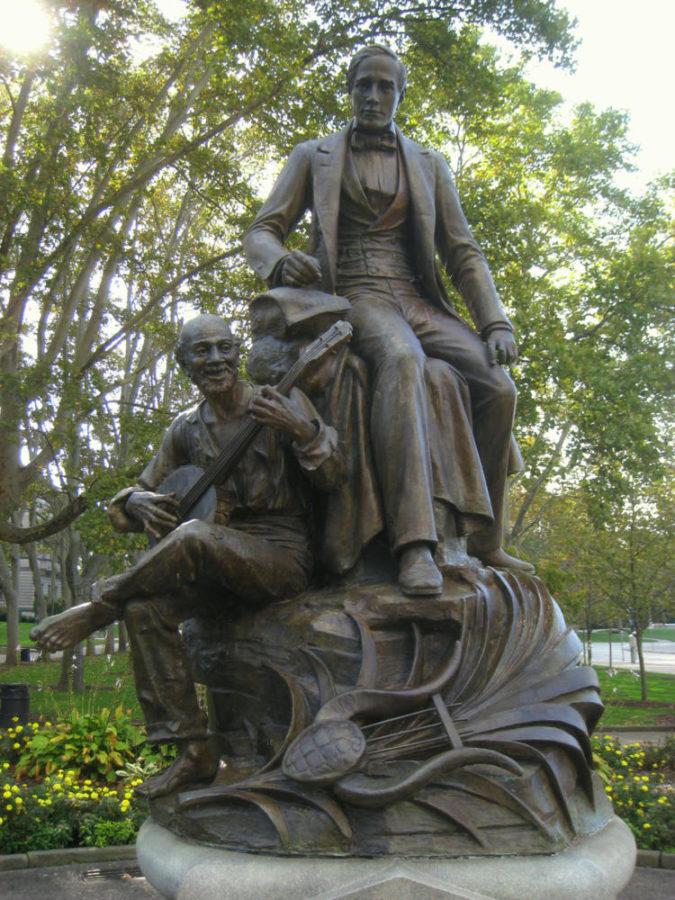In southern cities, from New Orleans to Orlando to Baltimore, the only thing hotter than the record-breaking weather this summer was the heated debate surrounding the removal of Confederate statues.
Minority residents of cities across the South have repeatedly expressed discomfort with these statues, and many are finally coming down. Controversy over the attempted removal of a statue of Confederate General Robert E. Lee in Charlottesville, Virginia, last month led to protests by white nationalists and multiple deaths.
In the wake of Charlottesville, the discussion and controversy around racially charged statues spread across the country to states never part of the Confederacy — including our own. In Pittsburgh, the conversation has centered around a statue outside the Carnegie Library in Oakland depicting famous Pittsburgh-born composer Stephen Foster with a black slave at his feet holding a banjo.
The slave is intended to represent Uncle Ned, a character from one of Foster’s songs. The statue’s commissioner, who had it erected in 1900, described Foster as “catching the inspiration for his melodies from the fingers of an old darkey reclining at his feet strumming negro airs upon an old banjo.”
From this, it’s clear that the statue was built with reprehensible prejudices in mind. And it’s true that many of Foster’s songs themselves perpetuated racial stereotypes. But to equate the statue memorializing Foster here in Oakland with statues of Confederate figures across the South both understates the viciousness of the statues in the South and removes a level of nuance from the discussion here.
Most statues memorializing Confederate leaders in the South were built explicitly to intimidate. According to the Southern Poverty Law Center, the vast majority of public buildings and monuments named in honor of Confederate leaders were dedicated during the periods between 1900 and 1920 and 1950 and 1970.
Both periods of intensified monument-building saw significant pushes in the South for civil rights for African-Americans. It’s apparent that whites in the South used Confederate memorials as a means to intimidate minorities and demonstrate their power.
With Foster, the context is different. While there is plainly a racial element to the statue’s depiction of the composer gaining inspiration, it wasn’t built to reinforce a racial hierarchy. The statue’s original purpose is closer to a celebration of Foster’s musical contributions.
Nevertheless, the statue’s role in today’s Pittsburgh has changed. And while it wasn’t built to terrorize non-white people, it’s important to have a discussion about whether its continued presence in the community promotes a racist worldview.
Mayor Bill Peduto has already promised Pittsburgh residents that the City Art Commission and Historical Review Commission would research and propose a plan for the statue’s future, saying in a statement last week that he personally supported moving the statue from public property. The mayor emphasized the role of dialogue and the preservation of local history in dealing with the statue’s placement.
“The removal of the statue isn’t going to be a binary decision,” he said.
Stephen Foster’s legacy is complicated — and so is any decision about what to do with the statue commemorating him. Peduto’s caution on the issue is commendable. And whether the statue ends up moving or not, it should be interpreted in the correct historical context.



